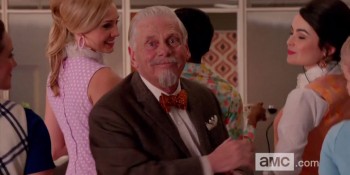Not too long ago, wine from Greece was shunned and degraded. “Greek wine tastes like mouthwash,” a fellow diner in a restaurant once told me. Indeed, there was a time when most Greek wines were harsh and unpolished offerings. But in recent decades, the quality has improved dramatically.
The tiny Greek islands may seem like an odd place to grow wine grapes compared to the wide open spaces of France and Tuscany. The islands are small and cramped, with little area to plant new vines. The Mediterranean climate is almost tropically humid, with relentless, baking sunlight, little rainfall, and high winds. Most resources are devoted to the tourism industry, leaving little behind for agriculture.
But the islands have multiple advantages. First, despite the humidity, the growing season is long and warm. The poor soil quality, composed mostly of rock and volcanic ash, is actually an asset; grapevines produce the best fruit for wine when they struggle. With readily available water and nutrients in the soil, vines grow like weeds, producing lots of green leafy growth, and poor quality, watery grapes. But when they must struggle to survive, the energy of the vine is focused on reproduction — which means a focus on the seed-containing grape.
Secondly, this rocky, volcanic soil on most Greek islands is immune to a number of pests and diseases that wreak havoc almost everywhere else. The tiny, aphid-like phylloxera insects are nowhere to be found due to the total absence of clay in the soil. This is a substantial advantage, considering phylloxera destroyed almost every acre of vineyards in Europe in the 19th century (an unfortunate transplant from the New World). Afterwards, Vitis vinifera (wine) grapevines were forced to be grafted onto phylloxera-resistant roots. But in the Greek islands, some roots have been growing for centuries. Even if the vine itself grows too old to produce quality fruit, a new young vine is grafted onto the roots. The roots are incredibly valuable here, since they have grown down so deep in the loose rocky soil in search of moisture.
But what about the lack of rainfall? The high winds? And the relentless sun? The industrious Greek growers have found a workaround for all three in the way they grow the vines. In most places on the planet, vines are trained upward, off the ground. Many different training styles exist, such as head training, where the vines are grown in the shape of a goblet, or trellis systems, where vine trunks are grown straight up and arms are grown outward along wires. Both systems have a primary goal: get the vines off the ground, where moisture, pests, and diseases lurk.
On the Greek islands, however, there are very few of any of these issues, so the vines are trained on the ground. The vines are directed in small circles on the ground, forming a rough basket shape. This low, sturdy structure avoids problems with the wind; the basket shape traps a small amount of moisture that the vines can absorb, and the grapes are pushed toward the inside of the basket, allowing the vine and leaves on the outside to shield the fruit from the sun.
I had the great opportunity to visit Greece and the best Greek island for winemaking, Santorini, in 2010. Touring several different wineries, it was somewhat puzzling to see the grapevines growing. The vines, growing in disorderly, almost random locations, are a far cry from the neat and tidy vineyards of France and California, where long, perfectly parallel rows of trellises prevail. There is no grass or ground cover, no weeds, nothing around the vines, just rocky earth. It’s a rustic style, doing only what is necessary to make very good quality wine. No energy (or water) is wasted on appearances.
Santorini, a crescent-shaped island, is a shell of its former self. Originally a normal, round shape, the island was actually a massive volcano which erupted catastrophically over 3,500 years ago. The center of the island dropped down beneath the surface of the water after the volcano erupted, leaving only the high steep cliffs that remain. Some say this volcanic eruption is the source of the Lost City of Atlantis myth, while others claim the eruption wiped out the Minoan civilization on Crete, the result of a massive tsunami.
Whites are the better known wines from Santorini and see greater production than reds. Assyrtiko is produced the most, along with Aidini and Athiri. While most white wine grapes lose acidity as they ripen, Assyrtiko does not. As a result, the wine can be both full-bodied and acidic and typically has a very refreshing flavor profile of citrus fruit and — surprise! — rocky minerality.
White wines on Santorini are usually called “Santorini” or “Nykteri.” Santorini wines must be at least 75 percent Assyrtiko and are typically unoaked. Nykteri, Greek for “working the night away,” is traditionally harvested at night, and also must be at least 75 percent Assyrtiko. The main difference between the two is the aging process; for Nykteri, that includes a minimum of three months in oak barrels. Both are very dry and acidic.
Red wine was, at one point, almost extinct on Santorini. With vineyard land being sold off to build apartments and hotels for tourism and the overwhelming preference for growing the more demanded Assyrtiko, red grapes like Mavrotragano were all but abandoned. What red grapes were grown were typically used for making cheap, sweet wines.
This downward spiral was reversed in the late 1990s and early 2000s when Mavrotragano was produced as a dry fine wine, with critical and popular success. With its thick skins to protect it from the sun, Mavrotragano wine is typically very dark colored, intense, and full bodied, with good aging potential. The flavors are reminiscent of Middle Eastern cuisine, with strong spices, stewed fruits, as well as earth, ash, and leather. Another red varietal, Mandilaria, is also grown.
Finally, Santorini produces a signature dessert wine called Vinsanto. The wine must be 51 percent Assyrtiko and is truly a nectar of the gods. Grapes are left on the vine longer than for any other wine, allowing sugar content to rise, and are then dried in the sun for around two weeks before they are crushed, creating very concentrated, sweet juice. The wine is aged in oak for at least two years before it can be bottled. While most dessert wines have very low or almost no acidity at all, the acidity of the Assyrtiko, even when fully ripe, gives this a unique flavor. It is no doubt sweet, but the acidity provides a beautiful balance. As you can imagine, after being in the sun for two weeks, flavors of dried fruits, like raisins, prunes, and apricots, shine through.
Estate Argyros and Domaine Sigalas are both fantastic wineries on Santorini, and their wines are available in the United States. The “Atlantis” series from Argyros would be a good place to start, considering the modest price tag. The series includes a white (90 percent Assyrtiko), a dry rose (80 percent Assyrtiko), and a red (blend of Mandilaria and Mavrotragano). If you can find the 100-percent Assyrtiko or Aidani bottles, definitely try them.
After that, search for the Assyrtiko or the Assyrtiko-Athiri blend from Domaine Sigalas, which are even better than the Argyros wines. They are both well worth the price and will not disappoint, especially with fresh whole fish, on the grill, with olive oil and simple seasonings.
Finally, for a special occasion, treat your closest friends to a sip of Vinsanto from either winery. You won’t be sorry.
Swirl, sniff, sip.







